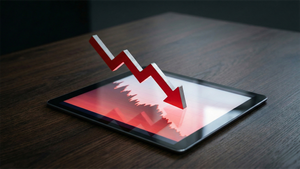
In an era increasingly defined by climate urgency, sustainable technology is no longer a niche concern but a driving force reshaping global industries and economies. Far beyond incremental improvements, a new wave of innovations is emerging, promising not only to mitigate environmental degradation but also to unlock unprecedented opportunities for economic development. From intelligent agriculture to advanced energy storage and the burgeoning circular economy, these technological breakthroughs are fundamentally altering how humanity interacts with the planet, offering scalable solutions to some of the most pressing challenges of our time. The immediate significance lies in their dual capacity to foster ecological resilience and spur robust, future-proof economic models.
Unpacking the Innovations: A Deep Dive into Green Tech's New Frontier
The landscape of sustainable technology is undergoing a profound transformation, moving beyond traditional approaches to embrace highly sophisticated, data-driven, and biologically inspired solutions. Precision agriculture, for instance, leverages GPS, drones, IoT devices, and AI to meticulously monitor and manage crop conditions. Unlike conventional farming that often relies on blanket applications of resources, this data-driven approach optimizes the use of water, fertilizers, and pesticides, tailoring inputs to specific field needs. Drones provide aerial imagery for health assessment and targeted application, significantly reducing chemical runoff and greenhouse gas emissions, a stark contrast to the broader environmental footprint of historical agricultural practices. Initial reactions from the agricultural community and environmental experts highlight the potential for vastly improved resource efficiency and reduced ecological impact, while simultaneously boosting yields.
Another pivotal shift is observed in the circular economy, which fundamentally rethinks resource management. Moving away from the linear "take-make-dispose" model, innovations here focus on keeping resources in use for as long as possible. AI and blockchain technology are proving instrumental; AI optimizes waste reduction and material recovery, while blockchain enhances supply chain transparency, verifying recycled content and ethical sourcing from raw materials to end-of-life. Advanced recycling technologies, including robotics and AI-based sorting, are improving material recovery from complex waste streams, while chemical recycling breaks down plastics into their basic components for reuse. This represents a significant departure from mechanical recycling limitations, enabling a broader range of materials to be reintegrated into the production cycle and drastically reducing reliance on virgin resources and landfill waste.
In the realm of renewable energy, the focus is expanding beyond established solar and wind technologies. Enhanced Geothermal Systems (EGS) are gaining traction, creating artificial reservoirs deep underground to tap into previously inaccessible geothermal resources, offering a reliable, 24/7 carbon-free power source with a minimal land footprint. Similarly, advancements in wave and tidal power are harnessing the consistent energy of the oceans, providing diverse and stable energy inputs. Perhaps most transformative is the rise of green hydrogen, produced through electrolysis powered by renewable electricity, emerging as a versatile clean fuel for transportation, industry, and heating, offering a zero-emission alternative to fossil fuels. These technologies provide critical baseload power and energy diversification, addressing the intermittency challenges often associated with traditional renewables and paving the way for a more resilient and fully decarbonized energy grid.
Corporate Crossroads: How Green Tech Reshapes Industry Giants and Startups
The rapid evolution of sustainable technology presents both immense opportunities and significant competitive pressures across the corporate landscape. Tech giants like Alphabet Inc. (NASDAQ: GOOGL) and Microsoft Corp. (NASDAQ: MSFT) stand to benefit immensely, with their AI and cloud computing capabilities being crucial enablers for precision agriculture, smart cities, and circular economy initiatives. Their platforms provide the computational backbone for data analytics, IoT management, and predictive modeling essential for optimizing resource use and supply chain transparency. These companies are actively investing in sustainable solutions, recognizing the growing market demand and the strategic advantage of integrating green tech into their core offerings.
For established industrial players, particularly in manufacturing and energy sectors, these developments necessitate a profound strategic re-evaluation. Companies that embrace green materials, sustainable manufacturing processes, and carbon capture technologies will gain a competitive edge, while those slow to adapt risk obsolescence. For instance, chemical companies exploring green chemistry or manufacturers adopting additive manufacturing (3D printing) for waste reduction are positioning themselves for future growth. Startups, often unburdened by legacy infrastructure, are particularly agile in innovating within these spaces, developing specialized sensors for smart farms, advanced recycling robotics, or novel green hydrogen production methods. These smaller entities can disrupt existing products and services by offering more efficient, environmentally friendly, and often more cost-effective alternatives. The market positioning for all companies will increasingly hinge on their sustainability credentials, driving investment in R&D and fostering new partnerships across the value chain.
Wider Significance: A Paradigm Shift for Society and the Environment
The widespread adoption of sustainable technology signifies a profound paradigm shift in how humanity addresses environmental challenges and pursues economic prosperity. These innovations are central to achieving global climate goals, particularly the Paris Agreement targets, by offering concrete pathways to decarbonization across multiple sectors. Beyond direct emissions reduction, they lead to significant environmental benefits such as reduced pollution from agriculture and manufacturing, enhanced biodiversity through regenerative practices, and improved resource conservation across the board. The circular economy, for example, promises to drastically cut waste generation and reliance on finite virgin materials, fundamentally altering consumption patterns.
However, the widespread implementation of these technologies also raises potential concerns. Scalability remains a key challenge; while many solutions show promise at pilot stages, scaling them to meet global demand requires substantial investment, infrastructure development, and policy support. The initial capital costs for advanced recycling facilities, green hydrogen production, or large-scale carbon capture projects can be significant. There are also questions regarding the energy intensity of some processes, such as direct air capture, and the need to ensure that the energy used is itself from truly renewable sources. Compared to previous environmental milestones, such as the initial push for renewable energy or basic recycling programs, the current wave of sustainable technology is characterized by its integrated, systemic approach, leveraging advanced computing and materials science to tackle complex, interconnected problems rather than isolated issues. This holistic approach marks a new era of environmental stewardship.
The Horizon Ahead: Future Developments and Expert Predictions
Looking ahead, the trajectory of sustainable technology points towards increasingly integrated and intelligent systems. In the near term, we can expect to see further advancements in AI and IoT-driven optimization across all sectors, making sustainable practices more efficient and accessible. The development of more cost-effective and energy-efficient carbon capture technologies, particularly direct air capture (DAC), is anticipated to accelerate, potentially transforming hard-to-abate industrial emissions and even enabling negative emissions. Green hydrogen infrastructure is also expected to expand rapidly, with breakthroughs in electrolysis efficiency and storage solutions making it a more viable fuel alternative.
Long-term developments include the widespread deployment of long-duration energy storage solutions, such as iron-air batteries, which promise to fully enable a renewable grid by providing reliable backup for intermittent solar and wind power. Experts predict a future where smart cities are not just efficient but truly regenerative, with integrated green infrastructure, closed-loop resource management, and widespread adoption of autonomous, electric transportation. Challenges that need to be addressed include developing global standards for sustainable products and processes, fostering greater international collaboration on technology transfer, and ensuring equitable access to these advancements, particularly for developing nations. Experts foresee a future where sustainability is not an add-on but an intrinsic part of all economic activity, driven by continued technological innovation and evolving consumer and regulatory pressures.
A Greener Tomorrow: Wrapping Up the Sustainable Tech Revolution
The emerging trends in sustainable technology represent a pivotal moment in humanity's quest for a harmonious coexistence with the environment. The detailed technical advancements in precision agriculture, the circular economy, diversified renewable energy, smart urban planning, green materials, and carbon capture are not merely incremental improvements; they are foundational shifts that promise to redefine environmental conservation and economic development for generations. The key takeaways are clear: technology is providing powerful tools to mitigate climate change and resource depletion, while simultaneously creating new avenues for economic growth and industrial transformation.
This development's significance in the broader history of technology and environmentalism cannot be overstated. It marks a departure from reactive environmental policies towards proactive, innovation-driven solutions that integrate ecological health with economic viability. The long-term impact will be a more resilient, resource-efficient, and equitable global society. In the coming weeks and months, it will be crucial to watch for further breakthroughs in energy storage, the scaling of green hydrogen production, and the policy frameworks that will support the widespread adoption of circular economy principles. The green revolution, powered by relentless technological innovation, is not just a vision; it is rapidly becoming our reality.
This content is intended for informational purposes only and represents analysis of current AI developments.
TokenRing AI delivers enterprise-grade solutions for multi-agent AI workflow orchestration, AI-powered development tools, and seamless remote collaboration platforms.
For more information, visit https://www.tokenring.ai/.





